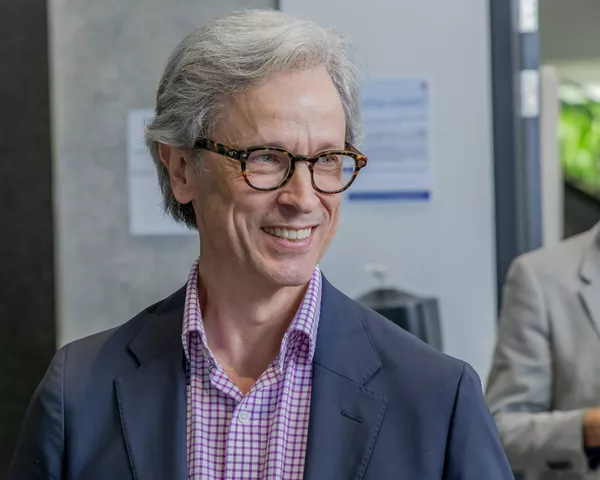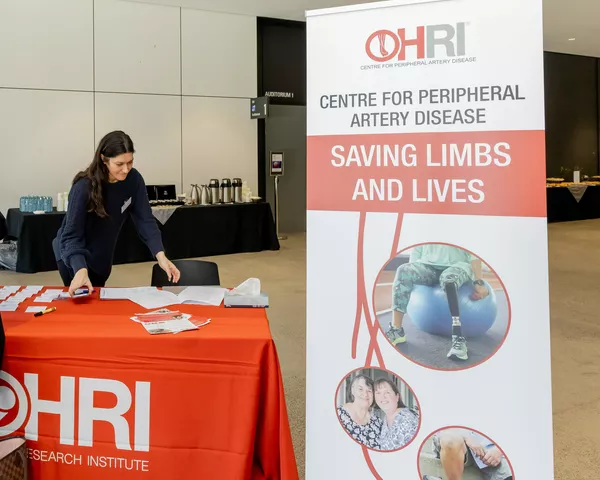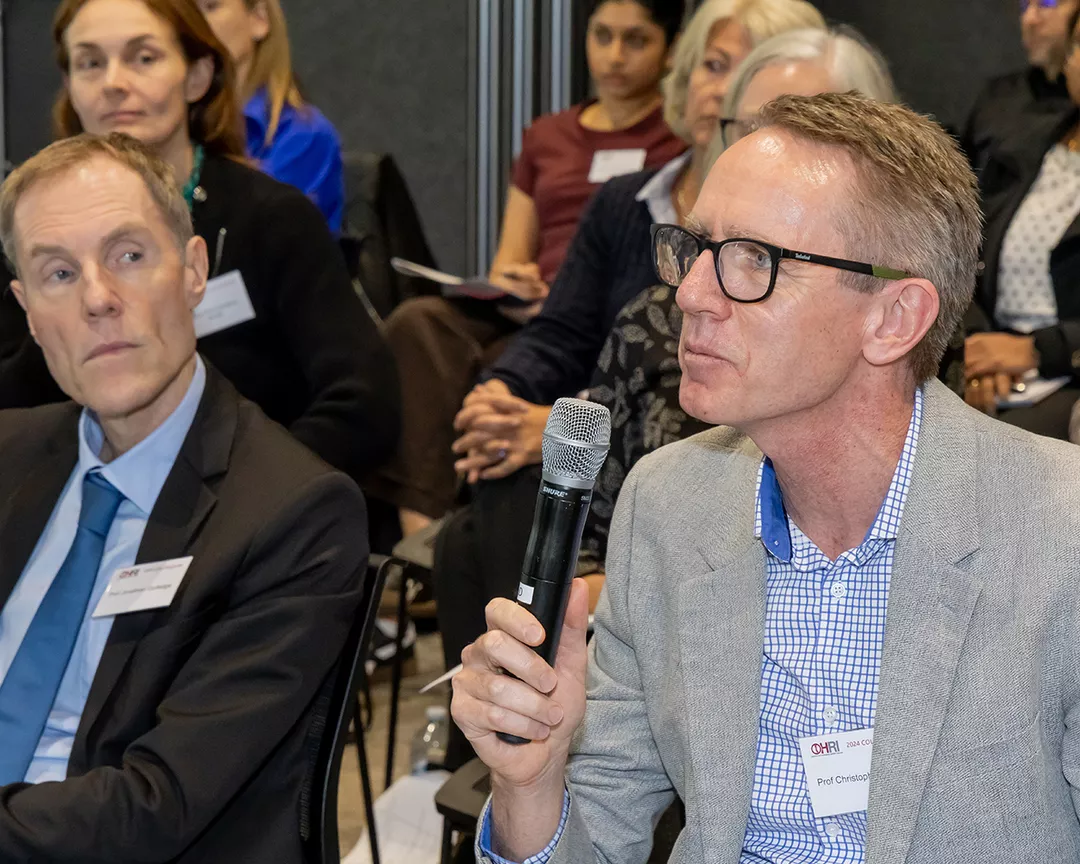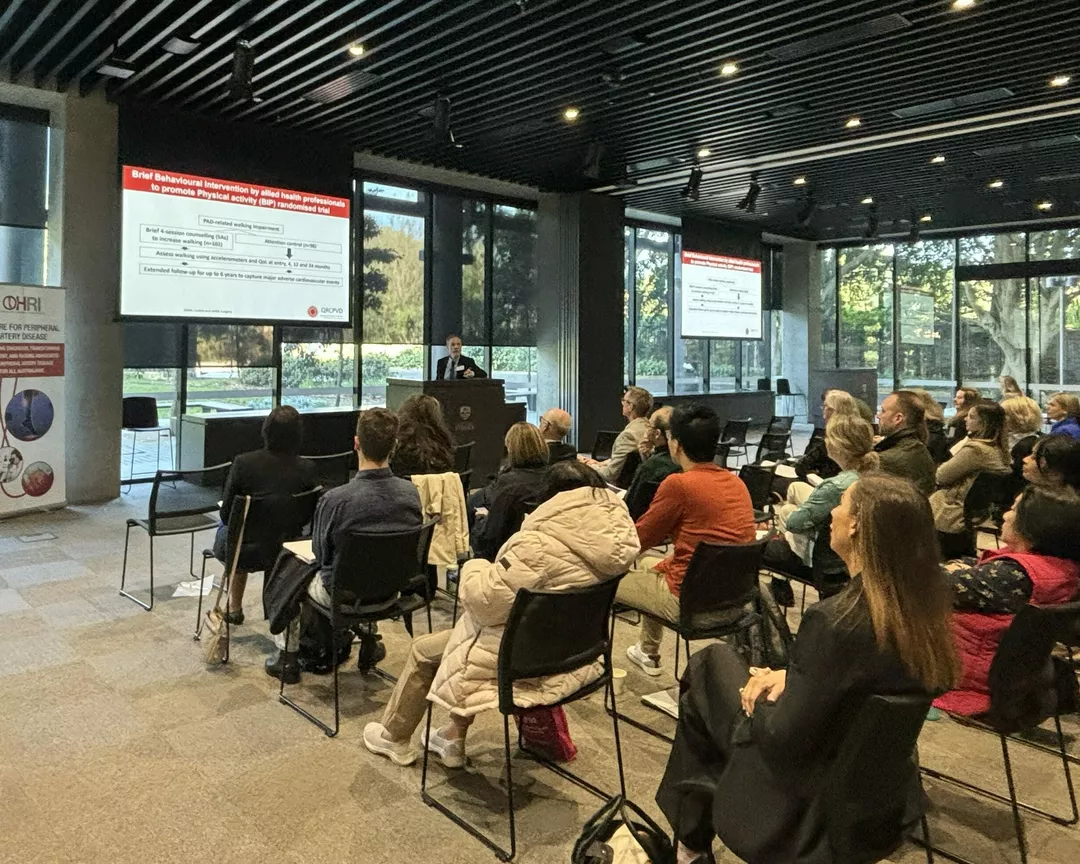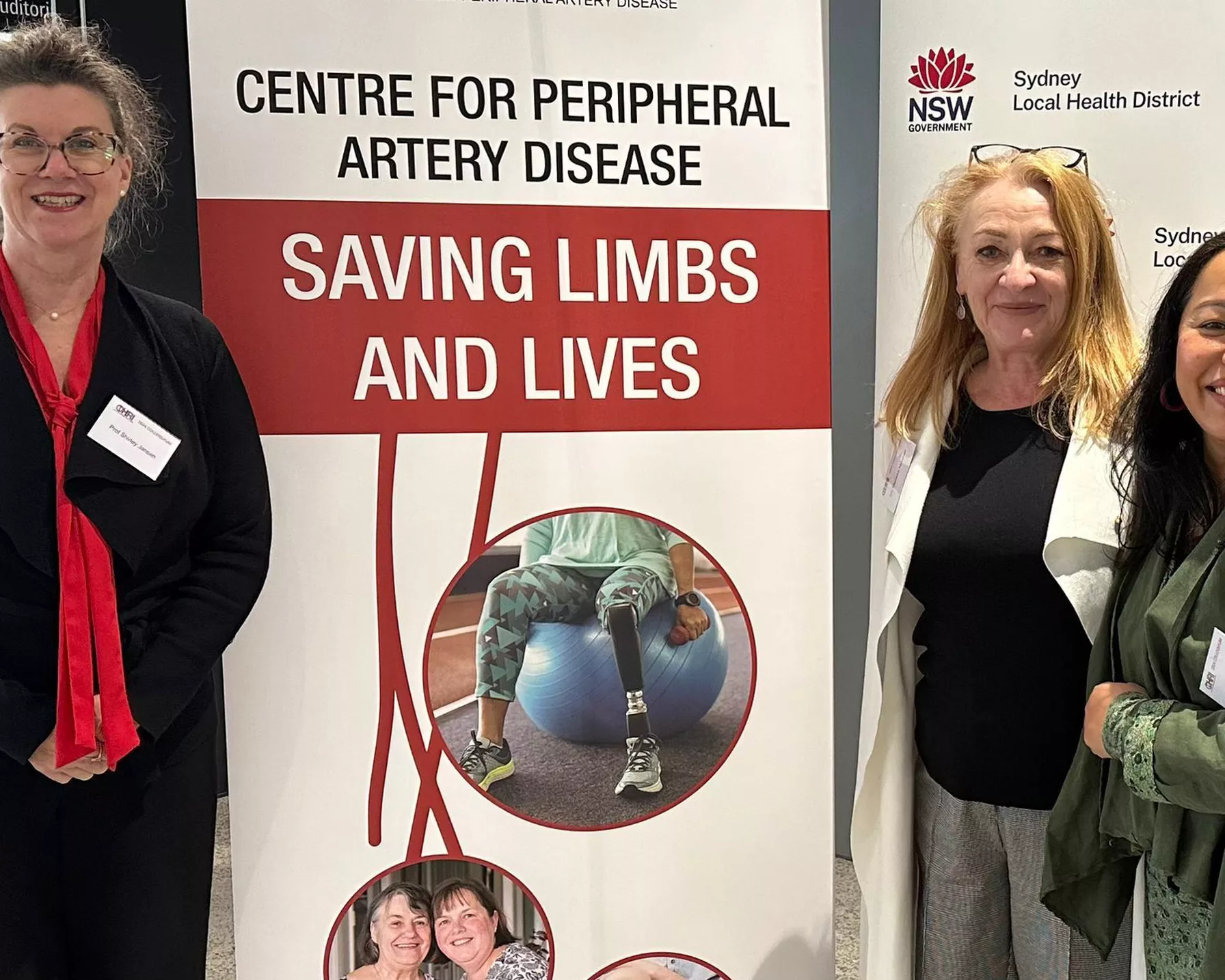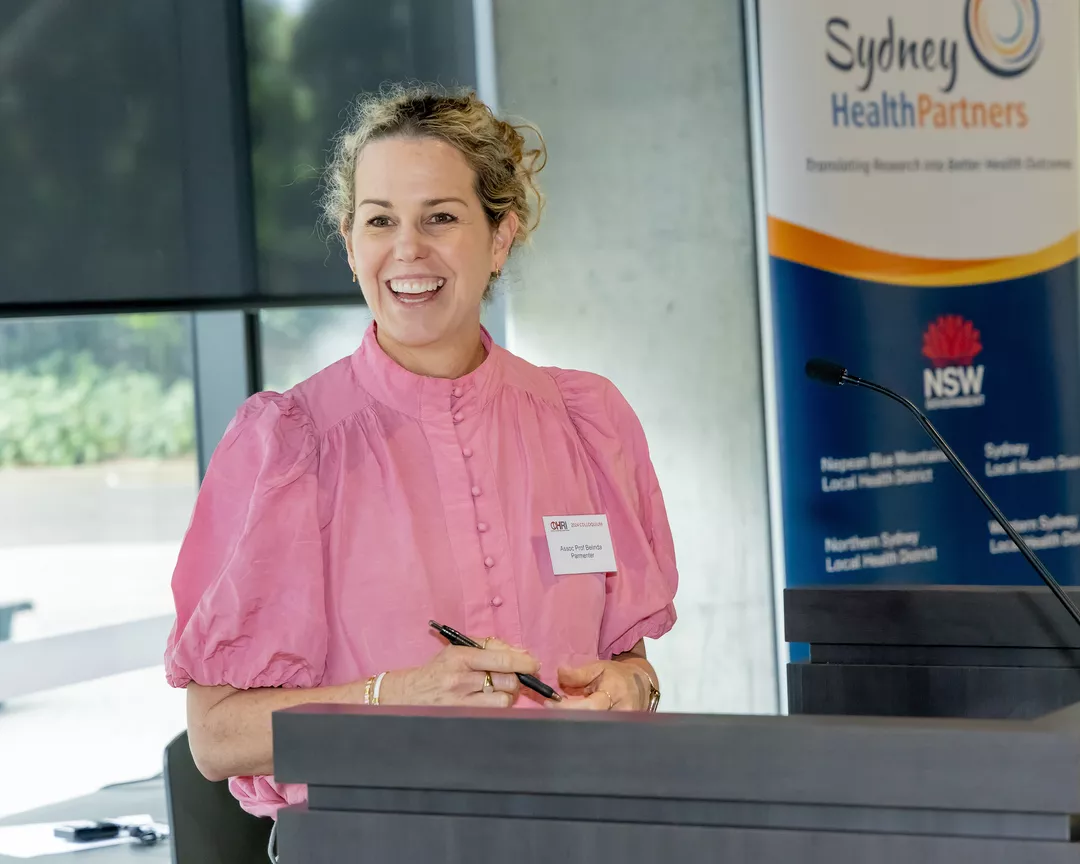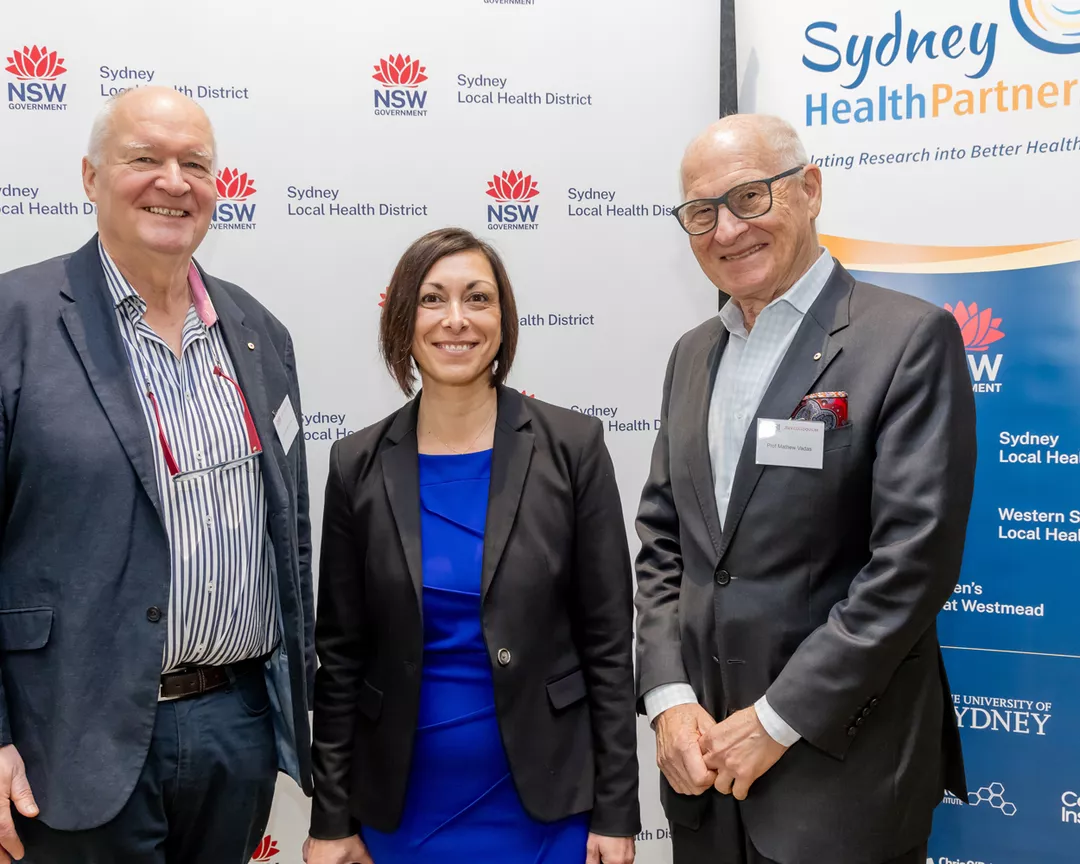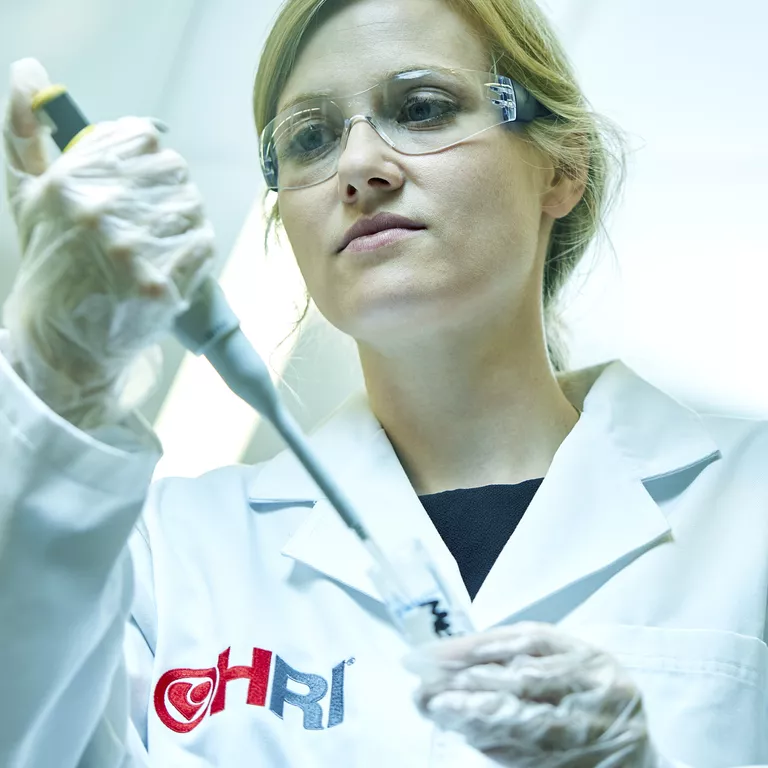The Heart Research Institute (HRI) Centre for Peripheral Artery Disease (PAD) has held its inaugural colloquium, bringing together leading experts in PAD from around Australia.
Over 100 researchers, clinicians and consumers all assembled at the Michael Spence Building Auditorium at The University of Sydney, and online, for a full-day conference themed around “Advancements in Peripheral Artery Disease: From Pathogenesis to the Clinic.”
The event was jam-packed with sessions from a diverse range of speakers, including patient perspectives, preclinical and clinical research, round table discussions on gaps in knowledge and several opportunities for networking.
“We had such an incredible turnout and response for our very first colloquium,” said Discovery Lead of the Centre for PAD, Assoc Prof Mary Kavurma. “From delving into disease mechanisms to exploring innovative treatments and patient care, our discussions were truly inspiring.
“I want to extend my deepest gratitude to the people and organisations who made this event such a success,” she added. “Thank you to our speakers, chairs and panellists for their expertise and dedication, and of course, to our sponsors Australian Cardiovascular Alliance, NSW Health, Sydney Health Partners and the Wenkart Foundation.”
The Colloquium was opened by former ABC Health Reporter, Sophie Scott, and Assoc Prof Uncle Boe Rambaldini from HRI’s Djurali Centre provided a stirring Acknowledgment of Country.
From left to right: Dr David Robinson, Assoc Prof Mary Kavurma and Assoc Prof Sarah Aitken
A sobering video featuring several of Assoc Prof Sarah Aitken’s PAD patients was also shared during the introductory session, which revealed many patients unfortunately get their diagnosis and information about PAD too late.
“This video highlights the great need for clinicians, researchers and consumers to come together and raise awareness about this debilitating condition,” said Assoc Prof Aitken, vascular surgeon and Clinical Lead of the Centre for PAD.
“We need models of care that empower our patients.”
The keynote speakers were Prof Shirley Jansen, from the Harry Perkins Institute of Medical Research, who presented on “Wall Strain and Atherosclerosis: It’s Not Just About the Lining” and Prof Jonathan Golledge, from James Cook University, who shared his insights on some common misconceptions about PAD and its substantial burden.
"It was a great opportunity to catch up with colleagues all working together to make a difference in an area that has the ability to affect people's lives profoundly," said vascular surgeon and Clinical Lead of the Centre for PAD, Dr David Robinson.
Left: Prof Jon Golledge and Prof Chris Askew
Other speakers included Prof Steven Wise, Assoc Prof Christina Bursill, Prof Gemma Figtree and Ms Melissa Noonan, the CEO of Limbs for Life, who provide support to amputees and their families, plus many more.
“The prevalence of amputees in this country is growing rapidly and the median age is declining,” said Ms Noonan during her presentation. “Unfortunately, our Aboriginal and Torres Strait Islander peoples are also disproportionately represented.”
An important and engaging panel discussion with exercise physiologist Prof Chris Askew (University of the Sunshine Coast), vascular surgeon Dr Thodur Vasudevan (The Alfred Hospital), podiatrist Ms Nanette Ferres and Assoc Prof Kavurma rounded out the last session, to address gaps in knowledge and future directions.
“I look forward to our continued progress and commitment to improving the lives of those affected by PAD,” Assoc Prof Kavurma said in her closing remarks.
“The discussions and connections made today will definitely shape my future research.”
View the full program here.
From left to right: Prof Shirley Jansen, Ms Melissa Noonan and Assoc Prof Juliana Hamzah
About the Centre for PAD
The Centre for PAD is headquartered in the HRI facilities in Newtown, Sydney and is focused on world-leading research that enhances diagnosis, transforms treatment and patient care and raises awareness about PAD.
It was established by a team of experts including HRI’s Assoc Prof Kavurma, vascular surgeons Assoc Prof Aitken and Dr David Robinson, alongside HRI’s Prof Andrew Coats and Prof Mathew Vadas.
Currently more than 230 million people around the world suffer from PAD, a type of cardiovascular disease where the narrowing of arteries results in reduced blood flow to a body part outside the heart or brain – usually the legs and feet.
Alarmingly, every two to three hours in Australia, one person has a limb amputated due to PAD.
The Centre acts as a hub for PAD experts spanning Sydney Local Health District’s Royal Prince Alfred and Concord Hospitals, The University of Sydney, and several research institutes. It will help identify gaps in PAD pathophysiology, treatment, and patient care.
“Unfortunately, PAD is the poor cousin of heart health and cardiovascular disease, and many people are unaware of the condition,” said Prof Andrew Coats.
“And with the number of Australians living with the condition predicted to grow, due to an ageing population and the diabetes epidemic, the establishment of the Centre for PAD is absolutely critical.
“We will do all we can to help raise awareness, transform treatment and improve the lives of patients.”
Interested in getting involved?
From left to right: Assoc Prof Belinda Parmenter, Dr Thomas Wenkart and Prof Ben Freedman
From left to right: Prof Andrew Coats, Assoc Prof Mary Kavurma and Prof Mathew Vadas; and the panel discussion

